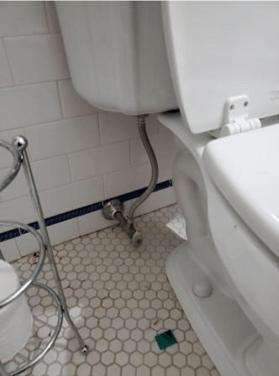Usual Root Causes Of Water Damage in a Bathroom
HereJust about everyone may have their own unique perception about Looking for Signs of Water Damage in the Bathroom.

The shower room is incredibly vulnerable for wet build-up as well as possible water damages due to the frequent use water in it. This short article offers straightforward assessment techniques to aid finding water damage hazards.
The constant use of water in the bathroom makes it exceptionally prone for moist buildup as well as potential water damage. By inspecting it on a regular basis, you can reduce water relevant damages.
The adhering to set of examinations is easy to execute as well as need to be done when in every 3 months in order to keep your washroom healthy and to avoid potential water damages brought on by the tub, the shower, pipeline joints as well as plumbing, sinks, closets, as well as the commode
Do not overlook executing these assessments and be extensive while performing them. Bear in mind that these straightforward evaluations can conserve you a lot of cash by providing early signs for water damage
Tub and Shower
The shower as well as bath tub require unique focus as well as upkeep. Check the ceramic tiles and also replace if split. See to it that there is no missing cement in between the tiles. Check and also replace split caulking at joints where the wall surfaces meet the floor or the bath tub. Clogged drains as well as pipelines problems will protect against the bathtub from drying as well as might indicate severe troubles beneath the bathtub. Talk to a specialist immediately to avoid architectural damages. Pay attention to discolorations or soft areas around the tub wall surfaces as they might show an internal leak.
Plumbing
Signs for water damage are difficult to identify since many pipes are set up inside the wall surfaces.
Pay unique focus to floor covering and walls moisture as well as spots as they might show an unseen plumbing trouble. Check moisture levels in adjoining spaces also.
Sinks as well as Cabinets
Sinks as well as cupboards are revealed to dampness and also moisture day-to-day and also are often overlooked. Evaluate regularly under the sink and on the countertop above it. Repair any drip in the trap as it may recommend drainpipe troubles. Check out the sink, sluggish draining pipes may suggest a blocked drain. Change sink seals if they are fractured or loosened.
The Commode
The commode is an at risk water joint. Inspect the water lines as well as search for leaks around the toilet seat, in the hose, as well as under the water storage tank. If you discover any type of indicators of dampness on the flooring around the commode, look for leakages in the toilet edge as well as storage tank seals.
Know that hanging bathroom dish deodorants enhances the possibilities for blockages.
Water Damage Signs In The Bathroom To Avoid Cleanup
Musty smell
This is one of the easiest signs to catch because musty smells are so odorous. The damp, earthy, moldy smell should be a big red flag. The smell will develop when moisture gets trapped in surfaces, and begins to facilitate mold growth. Leaking pipes under cabinets, inside walls, and behind shower fixtures will cause moisture to stay trapped and not dry, which will lead to mold growth and spread. As soon as you notice any musty smells in your bathroom, have it checked for hidden water damage and cleanup signs.
Visible mold
If the smell isn’t there to give it away, sometimes you will actually see mold growth. Finding mold in your bathroom is a serious problem, because mold is very harmful to your health. By the time mold growth is visible, it also means that water damage has already occurred and been present for some time. The only way the mold problem can be resolved is to find the source of the moisture and get it stopped. To safely and adequately remove mold, you need to have professionals handle the remediation. Do not waste any time in getting mold problems addressed, fixed, and sanitized so that you can protect you and your family from the many respiratory symptoms caused by mold exposure.
Damaged floors
Bathroom floors should be able to withstand some exposure to water while still remaining in good condition. However, when excess exposure or water leaks occur, they will begin to damage even the most water-resistant flooring. If you notice any cracking, bubbling, staining, or warping on your bathroom floors, there is probably a water leak somewhere causing the distortion. If you notice areas of the floor have become softer, or even have a spongy feeling, there is probably damage to the subfloor. Subflooring is typically made up of plywood. When plywood is exposed to water or moisture, it will absorb it. Once it has become saturated, the weight of the excess water will cause the wood to swell and soften. Check the floors in your bathroom frequently to catch any of these sings before they lead to damaged subflooring.
Changes on walls
When water leaks behind walls, it will cause changes in the drywall. Peeling plaster, blistering paint, and soggy wallpaper are all good indicators that excess water is building up behind the wall. Water leaking behind drywall will cause it to swell and be soft to the tough. If you start to notice gaps along the trim of your walls, or where tile meets the wall, it could also be a strong indicator that there is a leak behind the wall. Any changes, distortion, or damage on the walls should be evaluated as soon as you notice it to prevent further water damage and cleanup.

Hopefully you liked our part about Looking for Signs of Water Damage in the Bathroom. Thank you for finding the time to read our piece. Sharing is good. Helping others is fun. Thanks for your time. Kindly come visit our site back soon.
Booking